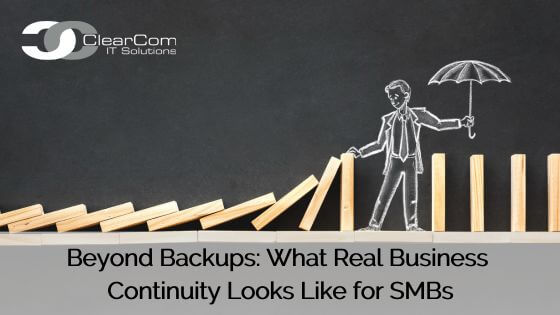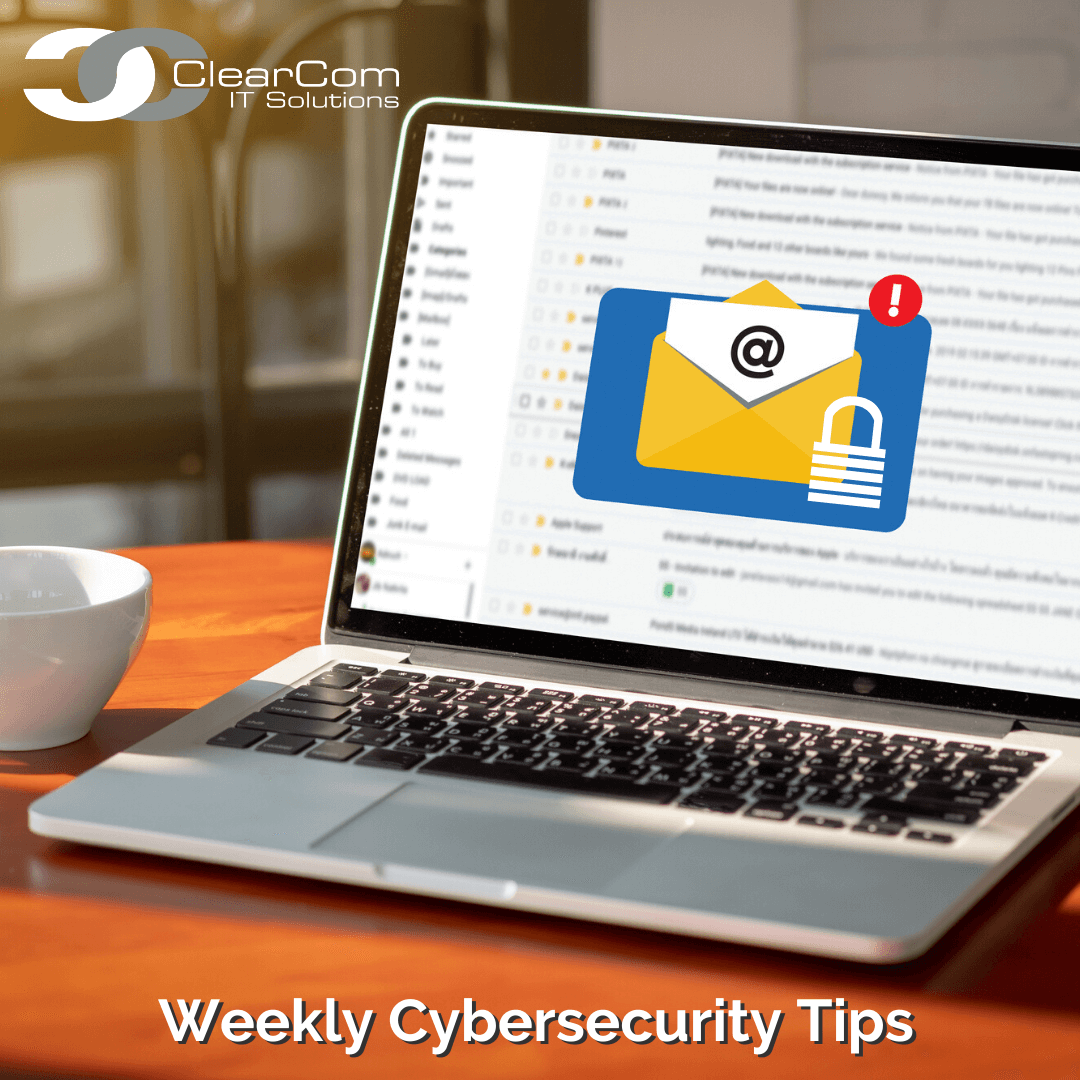 When most small and mid-sized businesses hear the term “business continuity,” they immediately think of backups. And while backups are an essential foundation, they’re only one piece of the puzzle. If your internet goes down, your systems get encrypted by ransomware, or your office floods, a backup won’t get you back in business fast enough.
When most small and mid-sized businesses hear the term “business continuity,” they immediately think of backups. And while backups are an essential foundation, they’re only one piece of the puzzle. If your internet goes down, your systems get encrypted by ransomware, or your office floods, a backup won’t get you back in business fast enough.
Business continuity is about much more than just having a copy of your data. It’s about keeping your operations running – no matter what.
Backup vs. Disaster Recovery vs. Business Continuity
Let’s clear up the confusion.
- Backup is simply the act of copying your data and storing it elsewhere. It’s vital, but passive. You still need time and effort to restore that data after a disruption.
- Disaster Recovery focuses on how you restore systems and data after an event like a cyberattack or hardware failure. It includes backups, but also accounts for recovery time and infrastructure readiness.
- Business Continuity ensures that your business continues to function during and after an unexpected event. A proper continuity plan minimizes downtime, while keeping employees productive, and maintaining high customer service standards during any potential outages.
Real-World Example: The Office with an Internet Outage
Imagine this: your building’s internet goes down for two days due to nearby construction. Your data is perfectly backed up in the cloud, but your staff can’t access it without an internet connection. Orders pile up, emails bounce, and customers get frustrated.
A backup didn’t save you because your continuity was broken. A business continuity plan could have included mobile hotspots, a secondary ISP, or cloud-based systems that employees could access remotely.
Real-World Example: The Ransomware Attack
Now, consider a small manufacturer hit by ransomware. All files are encrypted. Luckily, they had nightly backups.
But the recovery process takes three days. During that time, production stops, orders are delayed, and every department is paralyzed. The data is restored, but the cost of those three days is significant.
With a solid business continuity solution, like image-based backups, failover servers, or virtualized environments, they could have been back online in hours or even minutes.
What Business Continuity Really Looks Like
A proper business continuity strategy for SMBs should include:
- Redundant Internet and power sources
- Regularly tested disaster recovery plans
- Cloud-based tools for remote access
- Image-based backups with fast restore options
- Cybersecurity measures to reduce risks
- Clear communication protocols during outages
It’s not just about prevention – it’s about making sure your business can keep running regardless of what happens.
Why SMBs Can’t Afford to Wing It
Downtime costs small businesses an average of $8,000 per hour, according to recent studies. That’s not just lost revenue – it’s damaged trust, delayed projects, and staff standing around unable to work.
Building true business continuity may sound daunting, but it’s more achievable and more affordable than most SMBs think. The key is having a proactive IT strategy that plans for when, not if, disruptions happen.
Final Thought:
Don’t wait until your next crisis to realize a backup isn’t enough. Talk with your IT provider (or us) about building a business continuity plan tailored to your operations. Your business (and your bottom line) will thank you.



 Why Clinging to Old Tech Is Undermining Your SMB Profits
Why Clinging to Old Tech Is Undermining Your SMB Profits